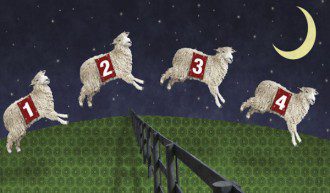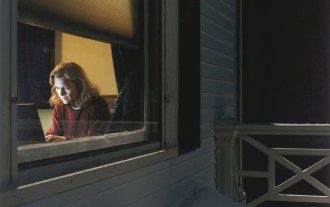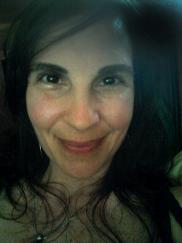Contributing writer for Wake Up World
Until recently, most of us just assumed that sleep is a nocturnal activity that naturally occurs in one long block. Today, largely thanks to historian and researcher Roger Ekrich, this long held assumption is being revisited. Ekirch published a study that examined hundreds of diaries, court records, and instructional manuals which demonstrated that, prior to the industrial revolution, most humans slept in two shorter blocks rather than one single large one. Based on his research, which found countless references to ‘first’ and ‘second’ sleeps, it appears that historically most people went to bed after dinner when the sun went down, slept for approximately 3-4 hours, then woke up for a couple of hours in the middle of the night, and then finally returned to sleep until dawn.
Two factors are believed to have influenced the shift from a multiple to a singular sleep session. The first is electric lighting, the second was the industrial revolution.
[pro_ad_display_adzone id=”110028″]
The advent of electric lights make it possible to extend the day. Thanks to electric lights, people could host and attend events in the evening and this saw the inclination to retire with the sun become less of a necessity.
Another factor which likely contributed to the shift was the daily structure introduced by the industrial revolution. Before the Industrial revolution more people were self-employed mainly in the farming and craft sectors, and while working hard was a necessity for most, there was a level of flexibility and autonomy that saw peoples’ days organized in accordance with what needed to be achieved. In contrast the Industrial Revolution saw a massive surge in people earning their living by working away from the home in manufacturing related jobs that required long, rigid working hours. For most people it became impossible to indulge in a nap when necessary, and so ‘a good night’s sleep’ became increasingly desirable.
The benefits of a two-phase sleep cycle
Though the one block sleep pattern fits in well with our modern lifestyle, recent studies have demonstrated that our bodies function better when sleep is broken into two blocks. Some of the noted benefits of a segmented sleep pattern include: improved cognitive performance, increased alertness, improved memory, improved relaxation, and stress reduction.
It seems that a bi-phasic sleep pattern is a more natural one that is aligned with our biological make-up. A sleep study that was conducted by Dr. Thomas Wehr at the National Institute of Mental Health, found that when a group of volunteers was placed into an environment where they had no access to electric lights or devices, they naturally reverted to a bi-modal sleep pattern after a four week adjustment period.
As well Carol Worthman, an anthropologist at Emory University in Atlanta, studied the sleep patterns of non-Western populations whose day was structured similarly to how our ancestors’ would likely have been. She found the prevalence of a communal sleep pattern in which individuals drifted in and out of consciousness throughout the nocturnal period.
The psycho-spiritual perspective
The first time the idea that our current sleep pattern might not be the most natural, or even useful one, entered my awareness was when I was reading Seth Speaks — The Nature of Personal Reality, a book written by a non-physical entity channelled through Jane Roberts. In this book, written in the 70s, Seth advised that our current sleep pattern was relatively new. In accordance with what current research is demonstrating, he claimed that humans didn’t naturally sleep in one extended block. Seth recommended sleeping in two blocks or more. This idea, that suggested one could be both a morning and night person, appeared quite radical to me at the time, yet made sense on an intuitive level.
While much current discussion related to this topic tends to focus on the physiological benefits of bi-phasic sleep, Seth highlighted the psycho-spiritual aspects. According to him sleeping in one big block has the effect of increasing the divide and disconnection between our conscious and unconscious self. Seth claimed that if a person were to shift from a single to a multiple sleep block pattern, they would develop and enhance their intuitive awareness, experience improved ability for dream recall, and develop their psychic powers with more ease. Essentially, what he is describing is a thinning of the veil, or filter, between our waking consciousness and the more creative, enchanted and allegorical level of awareness available during sleep.
Interestingly this idea is supported by both Wehr and Ekrick’s research. Ekrich found that the activities that were most frequently reported during the period of wakefulness between sleep sessions tended to be of a more creative and profound nature. Pursuits like praying, writing, contemplating, love making, and dream exploration were the types of activities that were more likely to be engaged in.
Ekrich noted that our ancestors would have “stirred from their first sleep to ponder a kaleidoscope of partially crystallised images, slightly blurred but otherwise vivid tableaus born of their dreams.” And that, “Waking up directly after dreaming afforded people a pathway to their subconscious… With morning dreams we don’t have the opportunity to let our dreams settle. The light goes on and we get out of bed immediately. So in short, we have lost what people in the past regarded as a critically important part of their lives – their dream life.”
Similarly Wehr noted that once his subjects had settled into their new, more physiologically aligned sleep pattern, they tended to wake directly after the REM stage of the sleep cycle, so that they recalled more of what occurred in their dreams, and thus had more access to the unconscious side of their being.
Wehr also found that during the wakeful periods of the night, the pituitary gland excretes high levels of prolactin. This hormone produces peaceful feelings and gentle dreamlike hallucinations that we occasionally glimpse just as we drop off to sleep. This dreamy hormone that has the effect of altering our perception is also produced when we feel sexually satisfied, and during breastfeeding. Wehr suggests that adapting to the modern way of life has forced us to abandon an important dimension of our existence. He claims that his research “might provide a physiological explanation for the observation that modern humans seem to have lost touch with the wellspring of myths and fantasies.”
Karen Emslie, a writer who has explored this topic from both a personal and theoretical perspective, found that by introducing a broken sleep pattern into her routine she has enhanced her creative abilities. She explains: “If I write in these small hours, black thoughts become clear and colourful. They form themselves into words and sentences, hook one to the next – like elephants walking trunk to tail. My brain works differently at this time of night; I can only write, I cannot edit. I can only add, I cannot take away. I need my day-brain for finesse. I will work for several hours and then go back to bed.”
It seems I am increasingly hearing of others who, as I do, are experiencing periods of night waking. Because we have been conditioned to believe that a solid block of sleep is the most desirable, we tend to worry when we find ourselves awake in the wee hours of the night. When the channel between the conscious side and unconscious side of the brain is flowing strongly whatever we think and feel is amplified. So if we allow ourselves to engage in worry and anxiety, due to fears around insomnia we are likely to create a negative experience that increases our levels of stress and makes it more difficult to return to sleep.
However, if instead we learn to shift our perspective and embrace the periods of night wakefulness as natural and beneficial, we will be more likely to discover a highly positive experience that has the capacity to add more richness and depth to our existence. In fact, in a world that is saturated with the shallow, trite, automated and superficial, the adoption of a bi-phasic sleep pattern might, with its ability to help us connect to the deeper aspects of self, be just what we need to help counter this disturbing trend and bring back profundity and enchantment to modern life.
References:
- www.sciencedirect.com/science/article/pii/S0166432808002416
- www.livescience.com/12891-natural-sleep.html
- www.aeon.co/essays/why-broken-sleep-is-a-golden-time-for-creativity
- www.blogs.scientificamerican.com/a-blog-around-the-clock/what-is-a-natural-sleep-pattern
About the author:
Christina Lavers is a writer, an artist, a creative enthusiast, and an inner world explorer. Born in Montreal Quebec, Canada, she now lives with her life partner and son in a rainforest pocket in the hills behind Coffs Harbour, NSW Australia. She spends her time playing, creating, growing and sharing.
Christina is devoted to assisting people to find and connect with their own creative magical current that flows deep within. She is now offering a comprehensive e-course designed to help people light up their world with passion and creativity. You can access Section One here for free!
Christina has also recently published her first full length book, a memoir about her wild awakening journey entitled Jump Into the Blue, and she is currently working on the next one.
“My journey has been about personal alchemy… exploring the mysteries of my soul and my environment, and learning to bring all aspects, the light and the dark, together with the transcending ingredient… love. The more I uncover and nurture the wounded aspects of my being, the more whole and grounded I feel and the more my outer world reflects the love, wonder and magic I have discovered inside”.
You can follow Christina’s work at:
Recommended reading by Christina Lavers:
- Are You a Bridge Between Two Worlds?
- Addictive Behavior Related to Low Levels of Oxytocin, the “Love/Bonding Hormone”
- 10 Signs You’ve Bought Spin
- New Study Shows Regular Contact with Nature Reduces Crime, Increases Social Cohesion
- Sugar is as Addictive as Cocaine – Here’s How You Can Kick the Habit
- Research Shows Just 7 Minutes of Meditation Can Reduce Racial Prejudice
- Taking Care of Our Inner Tribes – Microflora, Awakening and You
- Groundbreaking Study Maps the Decline of Wild Bee Communities in the United States
- Taking Responsibility For Our Energy
- More Evidence That TV is Dumbing Us Down
- Synchrony and Exertion of Dancing Found to Encourage Social Bonding, Raise Pain Threshold
- Quitting Smoking? Try These Herbs, Tips and Incentives to Help You Succeed!
[pro_ad_display_adzone id=”110027″]











